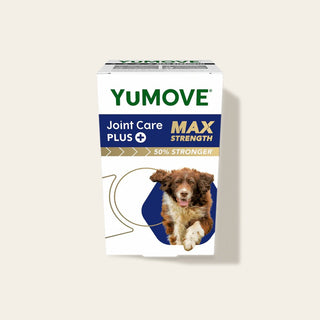

Beach challenges for your dog’s joints
Us Brits love to be beside the sea, and we love our dogs even more. Do you enjoy splashing around in the sea, or do you prefer to soak up the sun whilst the kids are busy building sandcastles? Maybe you like to sit in the shade with a good book? No matter how you spend your day at the beach, it’s sure to be a perfect outing if your furry best friend is there with you, too!
But did you know that the beach poses quite a few challenges for our doggies’ joints? Let’s take a look at the top beach dangers and how to keep your pooch’s joints safe at the seaside...
Sand
If your dog already suffers from dog joint stiffness – and even if they don’t – running in the sand can put extra strain on their joints. This is because the uneven surface can be tricky to navigate. The soft, slippery sand can increase the chance in your pup falling over – or worse – twisting an ankle. Even for us pet parents, walking in soft sand is difficult. So, remember to always alternate between walks near the waves and strolls on firmer pavements or grass.

Water
Swimming is great for your dog’s overall joint health! However, running in and out of the sea can cause severe strain. If your dog is obsessed with playing fetch in the water, make sure you’re standing knee deep yourself. This way, your pooch can stay in the water and swim back to you. Getting out of the water and jumping back in again is much more unsafe for their fragile joints.
On the other hand, swimming can sometimes aggravate stiff joints. Usually, this is due to the length of time spent swimming. Dogs don’t know when to stop exercising – purely because they’re having so much fun! So try to limit the amount of activity your dog does at the beach, otherwise he or she may wear themselves out.
Finally, never assume that your dog can swim. Some breeds are naturally strong swimmers, like Labradors. Others – like Pugs and Bulldogs – are not. Plus, if your dog isn’t used to being in the water, then you’re probably better off starting in a pool rather than the sea.

Tides
Even if your pup is a confident swimmer, they’re still susceptible to being swept away by strong waves. Plus, swimming against the tide will be more strenuous for your dog’s joints. Take extra precautions on windy days – and we know the British summer is full of them – as the waves will be higher and stronger.
Strong tides can quickly exhaust your pup. By opting for a doggy life jacket, your dog will gain some much-needed buoyancy and support. They’ll also tire out less easily, as they’re putting in less effort to stay afloat. We recommend the Float Coat™ dog life jacket – it comes in 3 bright colours, perfect for spotting your swimming pooch. Plus, it’s lightweight so will not add any extra strain to your dog’s joints. It also comes with a grab handle so you can help your dog in and out of the water, reducing the risk of injury as they haphazardly jump around on the sand!
Dehydration
Water is one of the best things for your dog’s joints. It aids with lubrication – keeping your pup flexible. It also allows your dog to absorb essential nutrients. Make sure you give your dog some lovely fresh water throughout your day at the beach. Don’t let them drink seawater. Not only will it make your dog sick, but it can also dehydrate them due to the high levels of salt. Check out the signs of dehydration in dogs.
Are you wondering what the best seaside doggy destination is? Discover our guide on the best beaches for dogs in the UK. If it’s your pup’s first time at the beach, we have plenty of tips to make sure they have a tail-wagging time.
Are you and your dog heading off to the seaside this summer? Let us know! Share your snaps and stories with us over on Instagram and Facebook!




